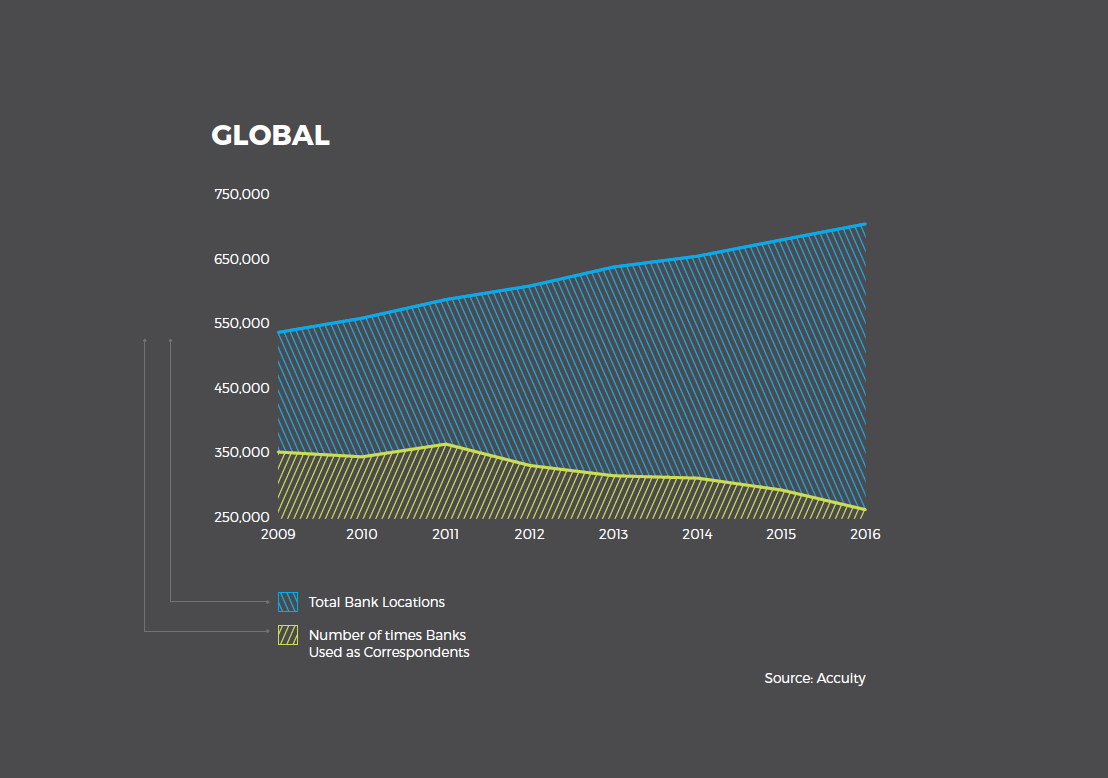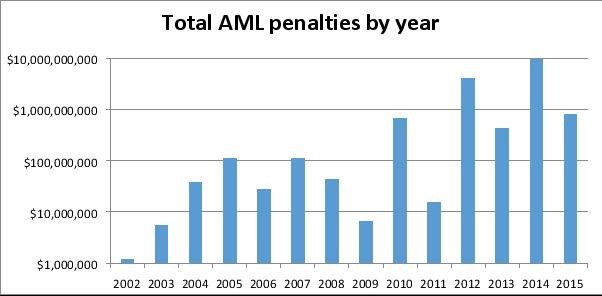Research: Decline and fall in correspondent banking relationships
Correspondent banking relationships have reduced globally by 25%, despite the fact that global GDP per capita grew during the same period, following the 2008 financial crisis, according to research by Accuity.
Henry Balani, global head of strategic affairs at Accuity, says: “The irony is that regulation designed to protect the global financial system is, in a sense, having an opposite effect and forcing whole regions outside the regulated financial system. This matters because allowing de-risking to continue unfettered is like living in a world where some airports don’t have the same levels of security screening – before long, the consequences will be disastrous for everyone.”
Since the global financial crisis of 2008, Accuity says regulators have imposed requirements for greater transparency, established higher liquidity thresholds for banks as well as stepping up enforcement actions on institutions that violate anti-money laundering (AML) regulations.
In 2014, AML penalties peaked at $10 billion compounding the challenges banks face in high-risk geographies (see image below).
In this climate, the “threat to banks of doing business in these geographies potentially outweighs the benefits of services to their clients, even if there may be good business opportunities to pursue”.
According to Accuity, the challenges of increased operational costs, competitive and regulatory pressures have driven banks to withdraw from correspondent banking relationships. Historically, these relationships were provided as services to international customers, but this is no longer viable, as banks cannot justify the increased compliance cost associated with offering correspondent banking services to their local customers. As a result, businesses in the regions most affected are struggling to access the global financial systems to finance their operations. Without this access, local banks are forced to use non-regulated, higher costsources of finance and expose themselves to nefarious actors and shadow banking.
Accuity says a decline in USD relationships is either indicative of a concentration in relationships or a reduction in USD dominance.
- The number of USD correspondent relationships declined by 15% with Euro relationships showing a steeper decline of 23%;
- The number of Chinese Renminbi (RMB) correspondent relationships increased by 8%;
- Global bank locations in developing economies increased by 31% since 2014.
Findings from its research reflect the number of correspondent banking relationships transacting in particular currencies rather than the volume of currency transactions. Accuity’s research shows a steady decline in the number of USD correspondent banking relationships globally since 2014. The USD was the currency of choice as the global economy recovered from the global financial crisis in 2008. While USD continues to be the currency of choice, the rate of decline in the number of USD relationships further accelerated with a drop of 13% between 2015 and 2016 from a decline of 2% between 2014 and 2015.
While the 25% drop in global correspondent relationships is greater than the USD correspondents decline, the trend for USD is particularly significant when compared to the contrarian increase in the number of Chinese RMB correspondent banking relationships. Since 2014, research shows an 8% increase and since 2012, the number of the RMB relationships showed a dramatic increase from 3,600 to 8,800 relationships in 2016 (albeit from a low base). The research further reveals a peak in the number of RMB correspondent banking relationships in 2015 as the USD continued to decline.
There are two explanations for this decline in USD relationships when compared to the RMB. Either there is a concentration in USD relationships, with more transactions settled through fewer relationships, or there is a decline in the dominance of USD.
Global bank locations in developing economies have also increased by 31% since 2014, largely due to growth in China and APAC. This is significant as the number of banks in established global financial centers are in decline.
China prevails
Accuity states that actions from US and European regulators have resulted in banks shunning higher risk economies while missing out on the potentially profitable use of their currencies for correspondent banking, in the process.
Its research reveals that the areas benefiting from the changes are largely in the East. For instance, China has experienced a 133% increase in the number of banks since 2009 and an astounding 3,355% growth in correspondent banking relationships during the same period.
Balani says: “The decline in USD relationships has several explanations: either we are seeing a concentration in USD relationships among fewer correspondent banks, or we are seeing a decline in USD dominance. The shift can also be attributed to the potential AML penalties associated with using these currencies. Since the financial crash of 2008, we have also seen significant commitment from financial institutions in emerging economies to demonstrate they are not high risk. We see this playing out in the East and the increased number of relationships reflects their commitment.”
Accuity’s research was based on data between 2009 and 2016.













































